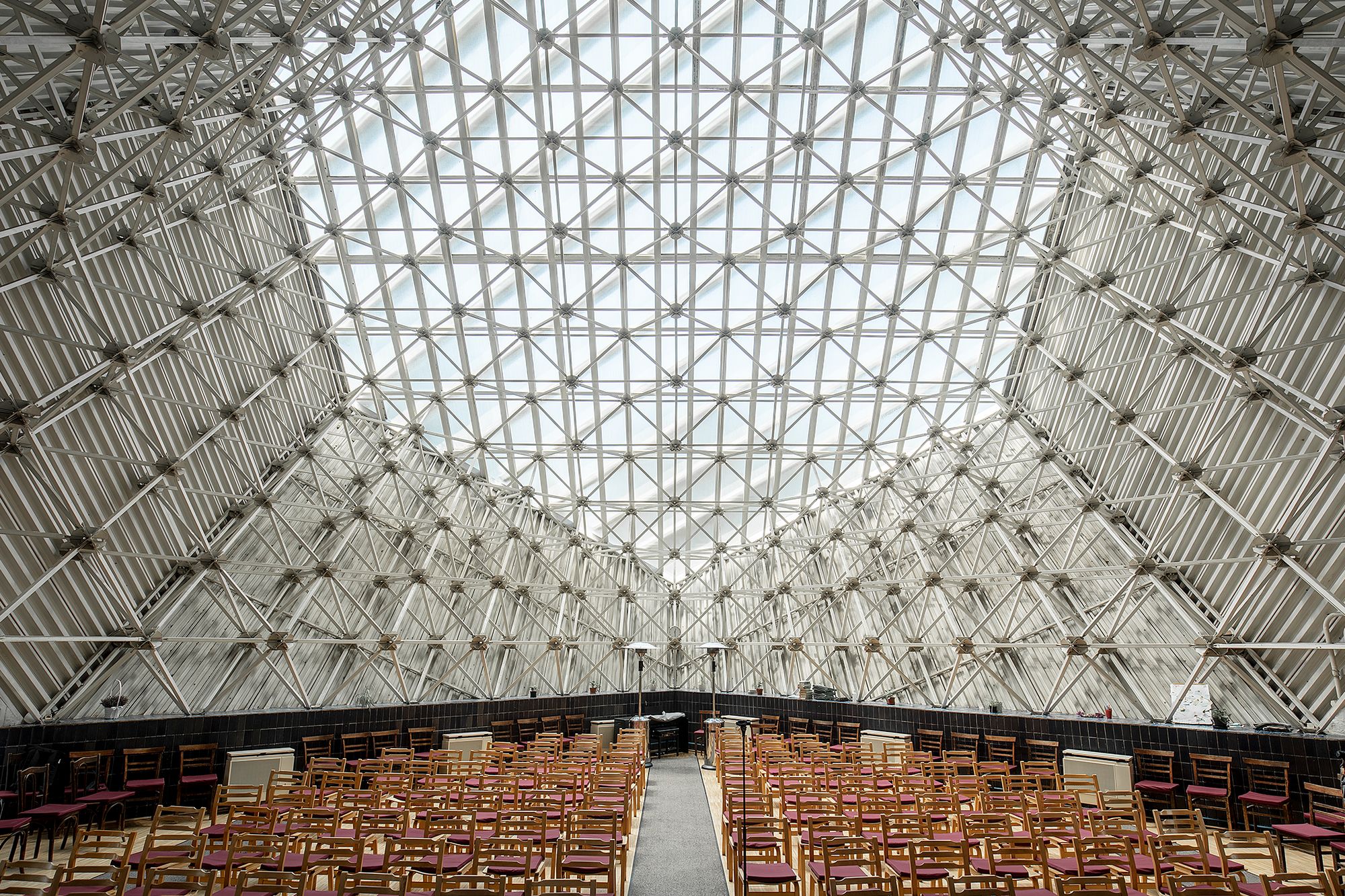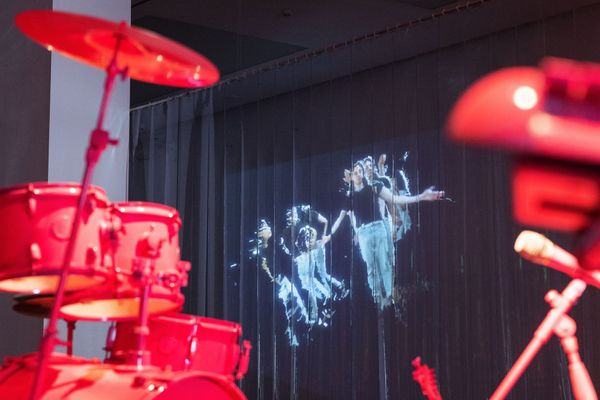Locals believed the Calvinist Church of Külső-Kelenföld was more of a high-tech miracle, such as a missile site or a UFO than a sacred building—with the tour of this iconic building, the Othernity urban walk series of the Contemporary Architecture Center has officially started. Church building challenges in the Kádár era, industrial aesthetic and the big question: what should be the fate of this extravagant building that is becoming less and less fit to fulfill the necessary functions by the day.
District XI is a relatively new part of Budapest. Until the end of the 19th century, the section to the south of Gellért Hill remained undeveloped and thus became an experimental field for construction projects in Budapest. They tried several types of tenement house constructions in the district and we can also think of the Calvinist Church of Külső-Kelenföld as a representative of innovative trends—told us Gergely Hartmann, one of the guides of the walk. Ybl award-winning architect István Szabó, who was one of the members of the church building triumvirate of the era in addition to László Csaba and Ferenc Török, started designing the building handed over in 1981 three years earlier.
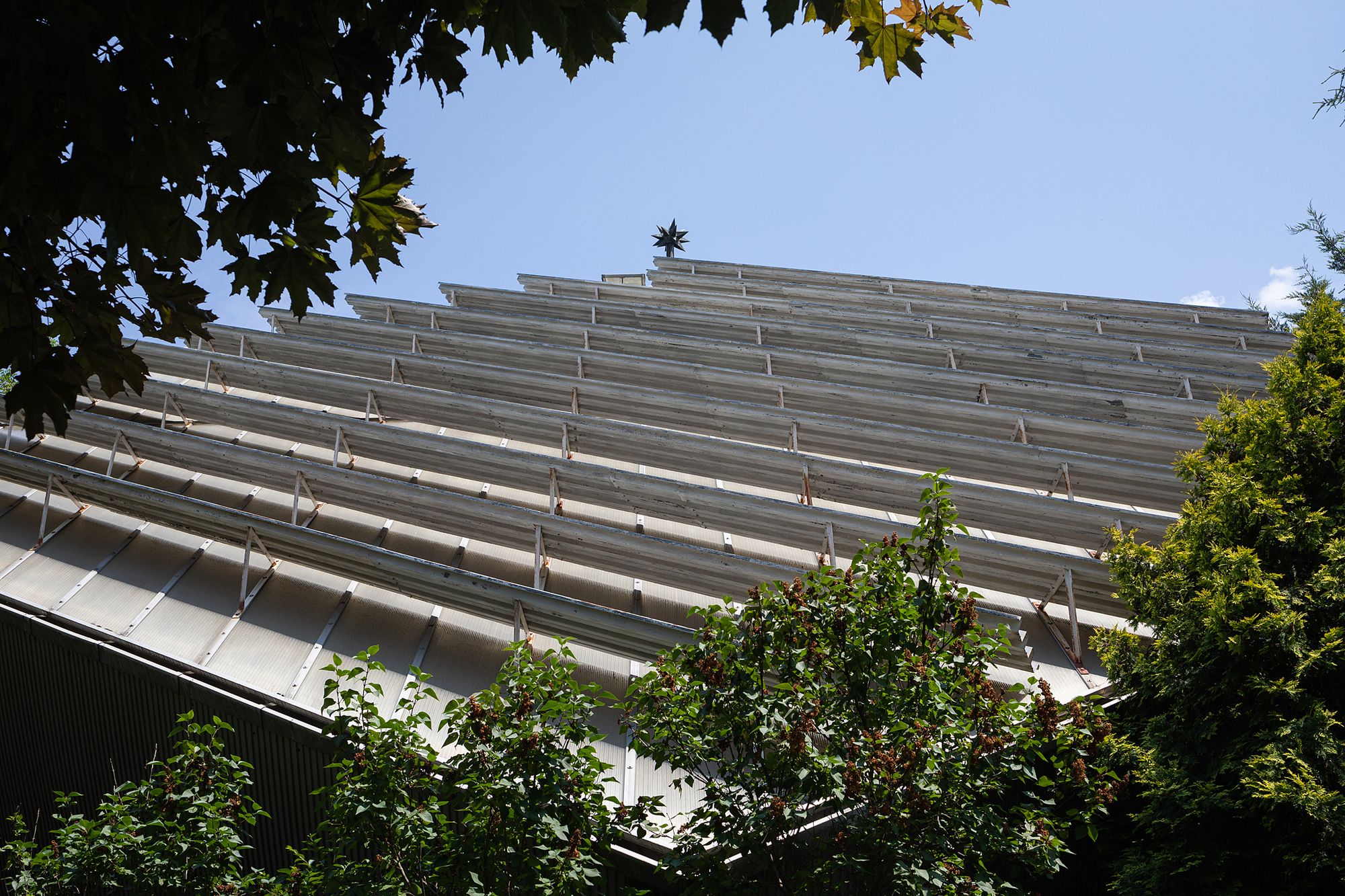
István Szabó started focusing on church construction, which was by no means supported during the socialist era, in a late phase of his career. At the early stage of his career, he primarily worked on interior design projects as well as on the design and construction of exhibitions. Among others, he was in charge of the renovation of Corvin Department Store after World War II as well as the building of the parking and office building at Szervita Square and the All Saints Parish Church at Farkasrét. The Calvinist Church of Külső-Kelenföld was designed by István Szabó during his retirement, based on a commission received from the Calvinist Congregation of Budapest-Külső-Kelenföld founded in 1950. One of the guides of the walking tour, architect István Juhász, knows the building by heart as a member of the congregation: he emphasized that the congregation and the history of the building are practically inseparable here. The same as the past of the church, its past and present can only be examined in the intersection of the two.
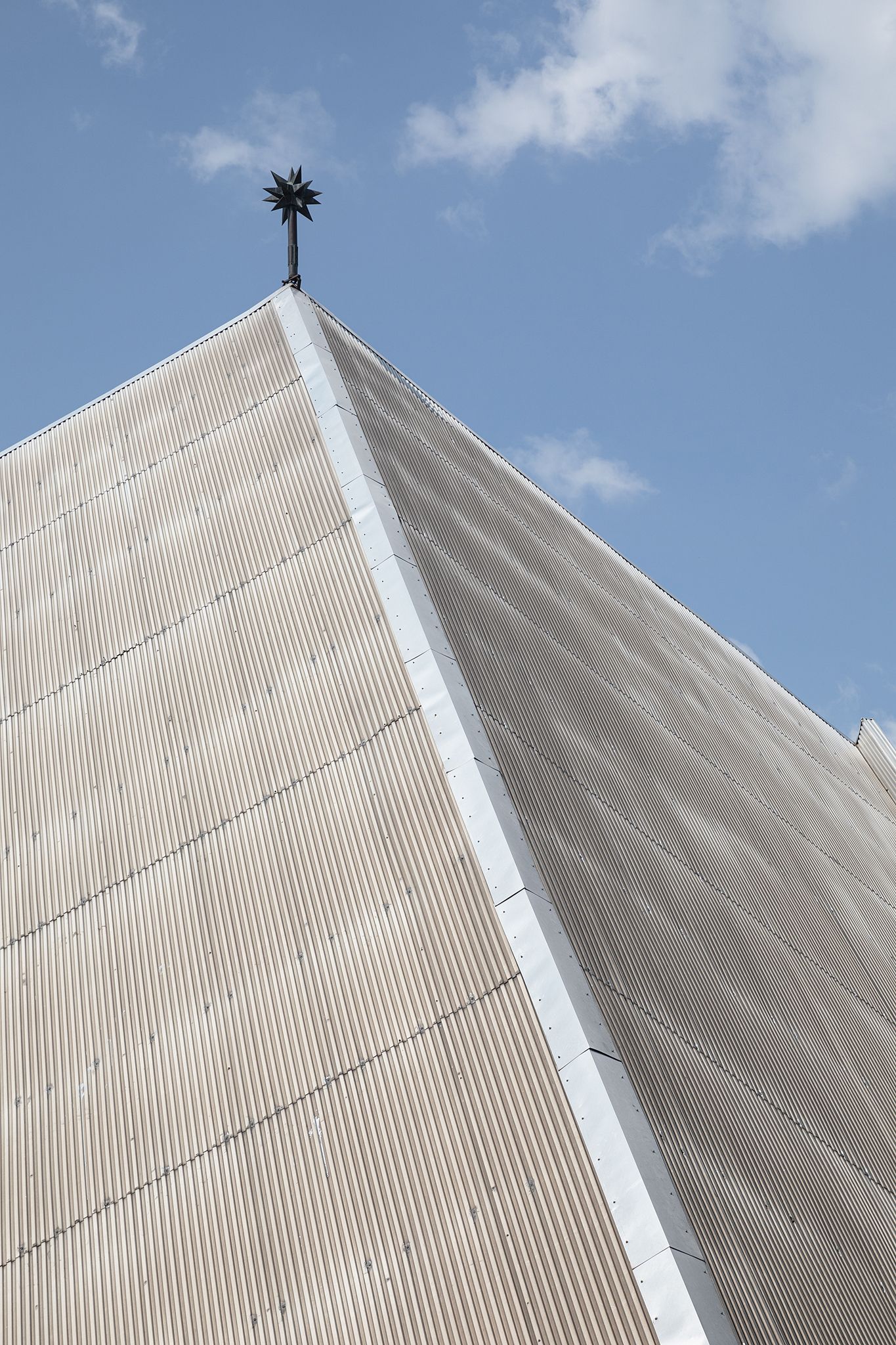

Standing on Ildikó Square, the church lies in the embrace of the unbroken row of two-story buildings of Szentimreváros built in the late 1930s on one side, and the six-story blocks of the socialist housing estate built from the sixties and seventies on the other side—there’s even a residential building of Larsen-Nielsen system, built with Danish technology in the church’s vicinity.
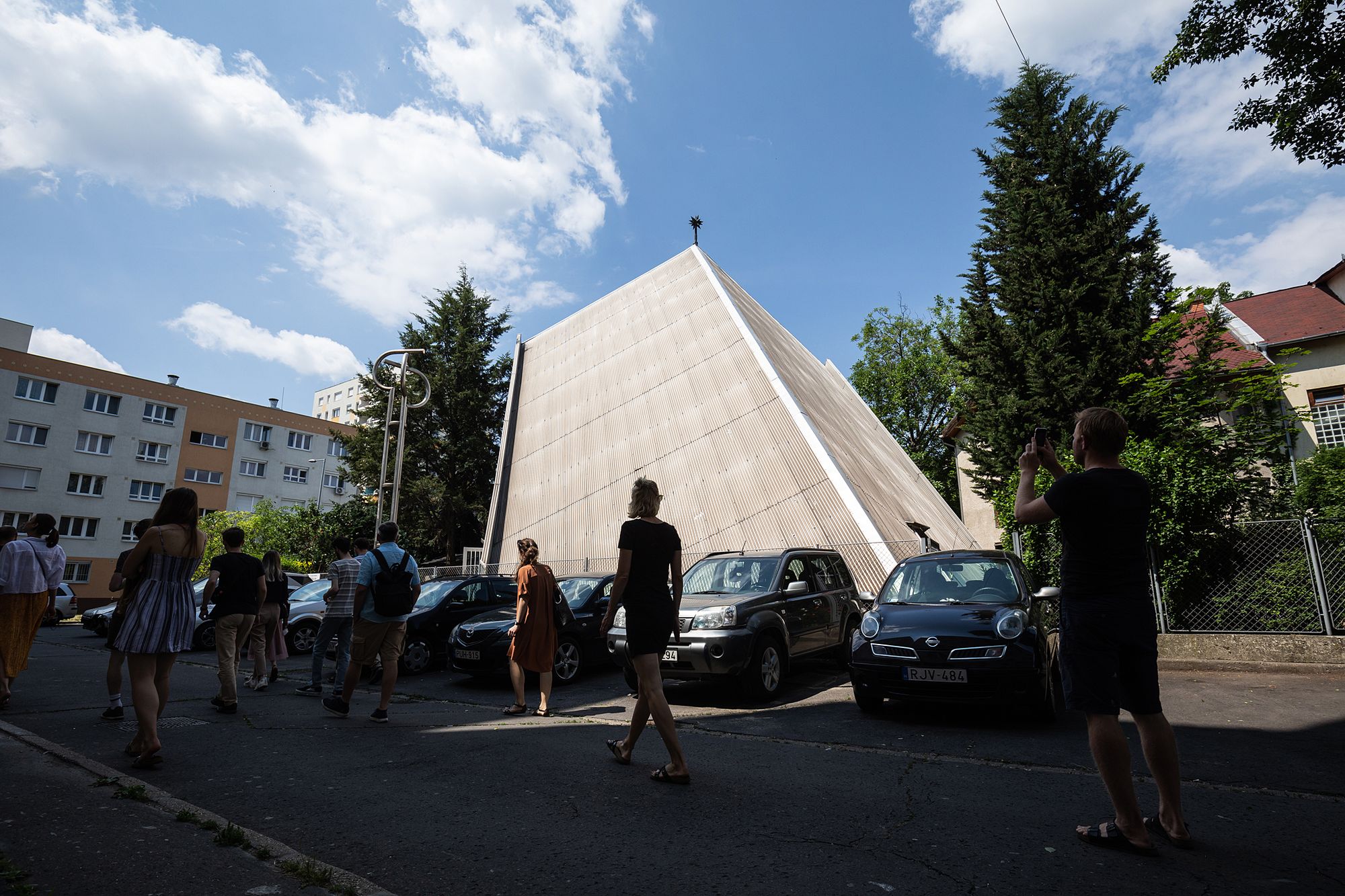
Considering the scantiness of space, Szabó opted for a closed, dense geometric shape. The building with a hexagonal floorplan, inclined in 45 degrees and adjusted to its neighbors both in terms of scale and height can hardly be noticed when one approaches it from Vahot Street—today it is hidden behind the treetops.


Next to the entrance, visitors are welcomed by Zsuzsa Bartha’s statue bent of steel tubes, intending to fulfill the symbolic role of a bell tower in the absence of a real one with an electronic bell play.
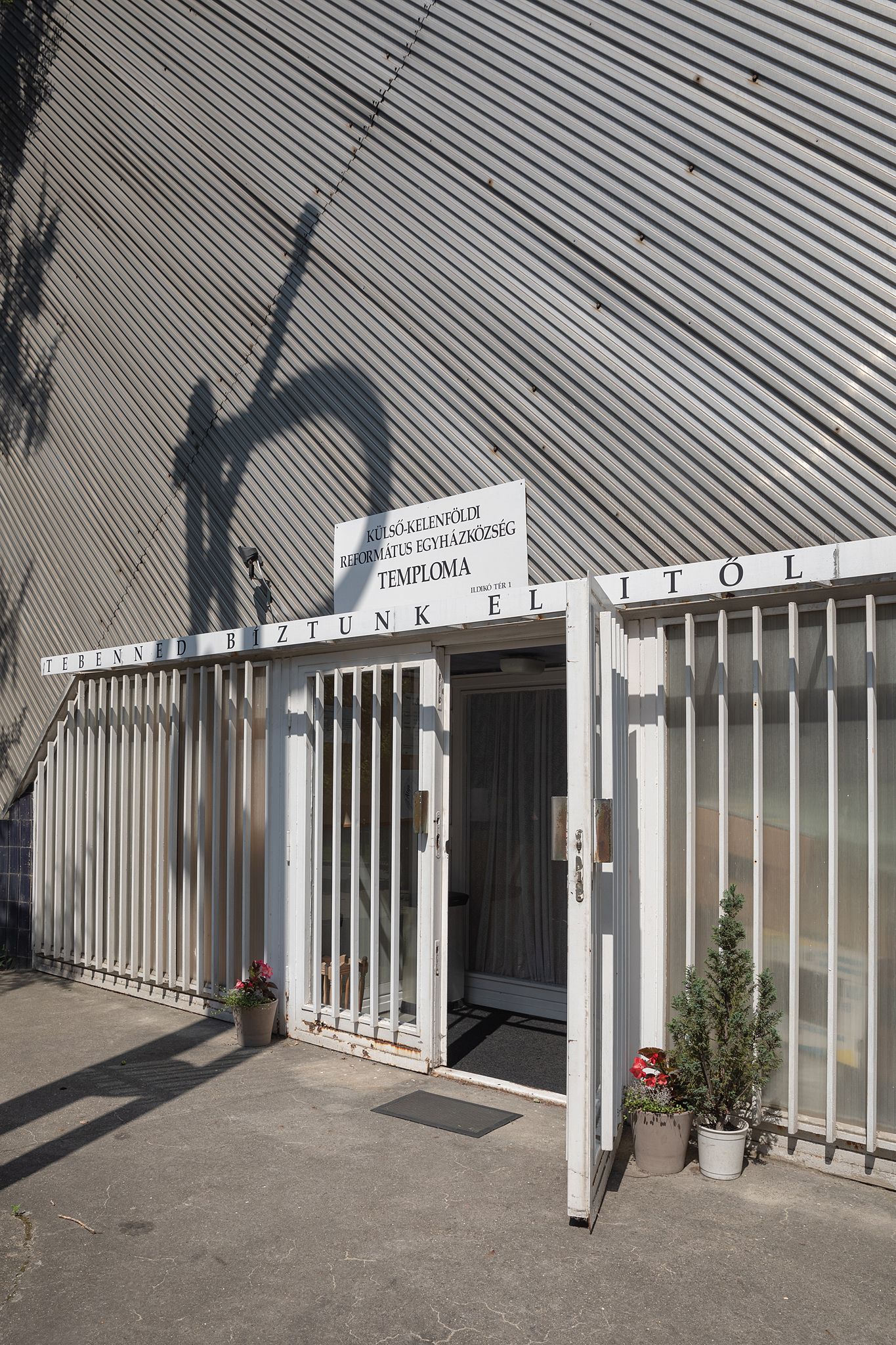

The building truly unveils its architectural, functional and aesthetic essence upon entering the church space: the industrial feel of the external aluminum cladding is further intensified inside with the steel space grid structure. The light flooding in through the glass wall of the building facing the sky leads visitors’ eyes to the communion table and platform clad in royal blue “pool tiles”.

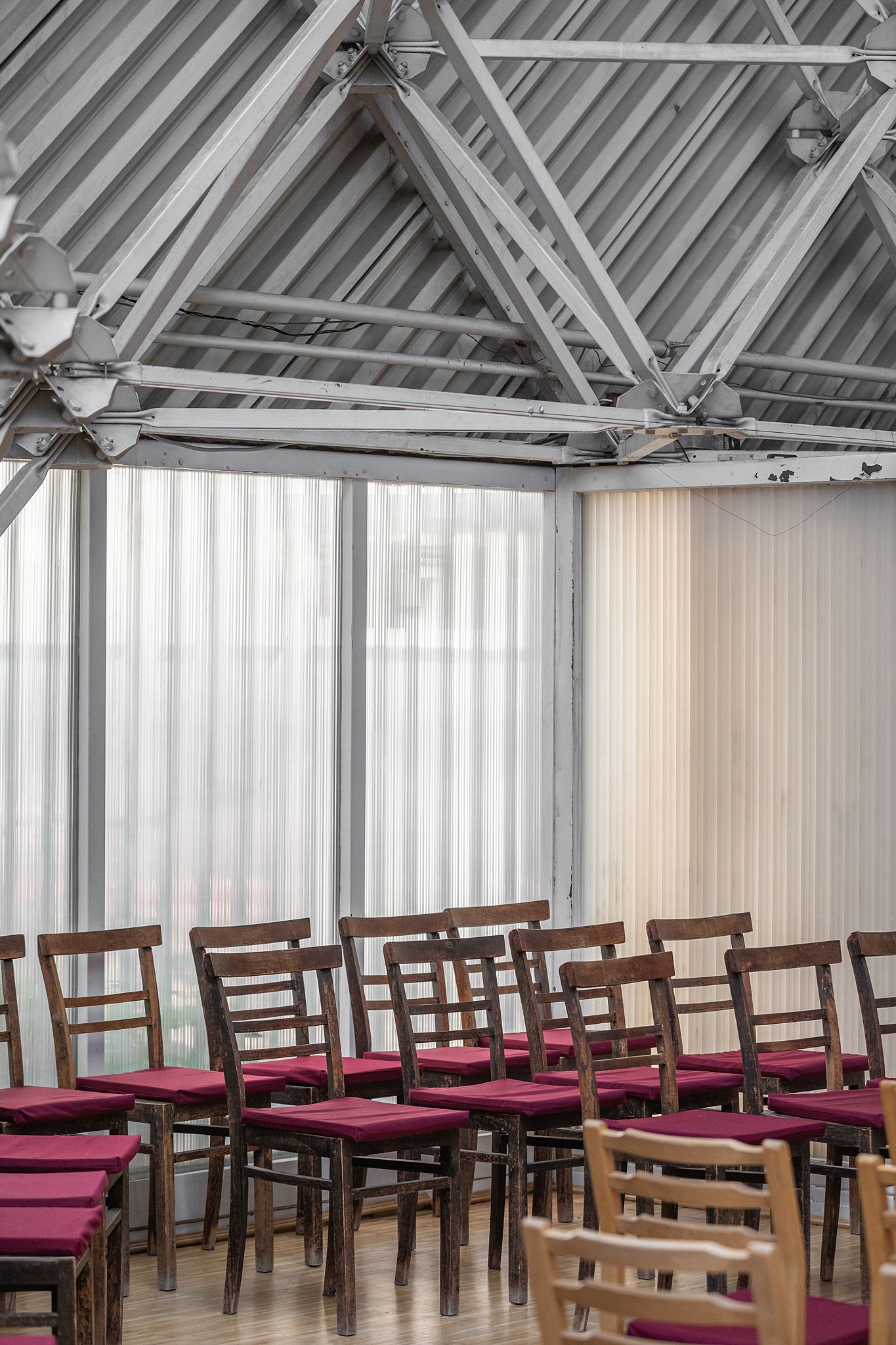
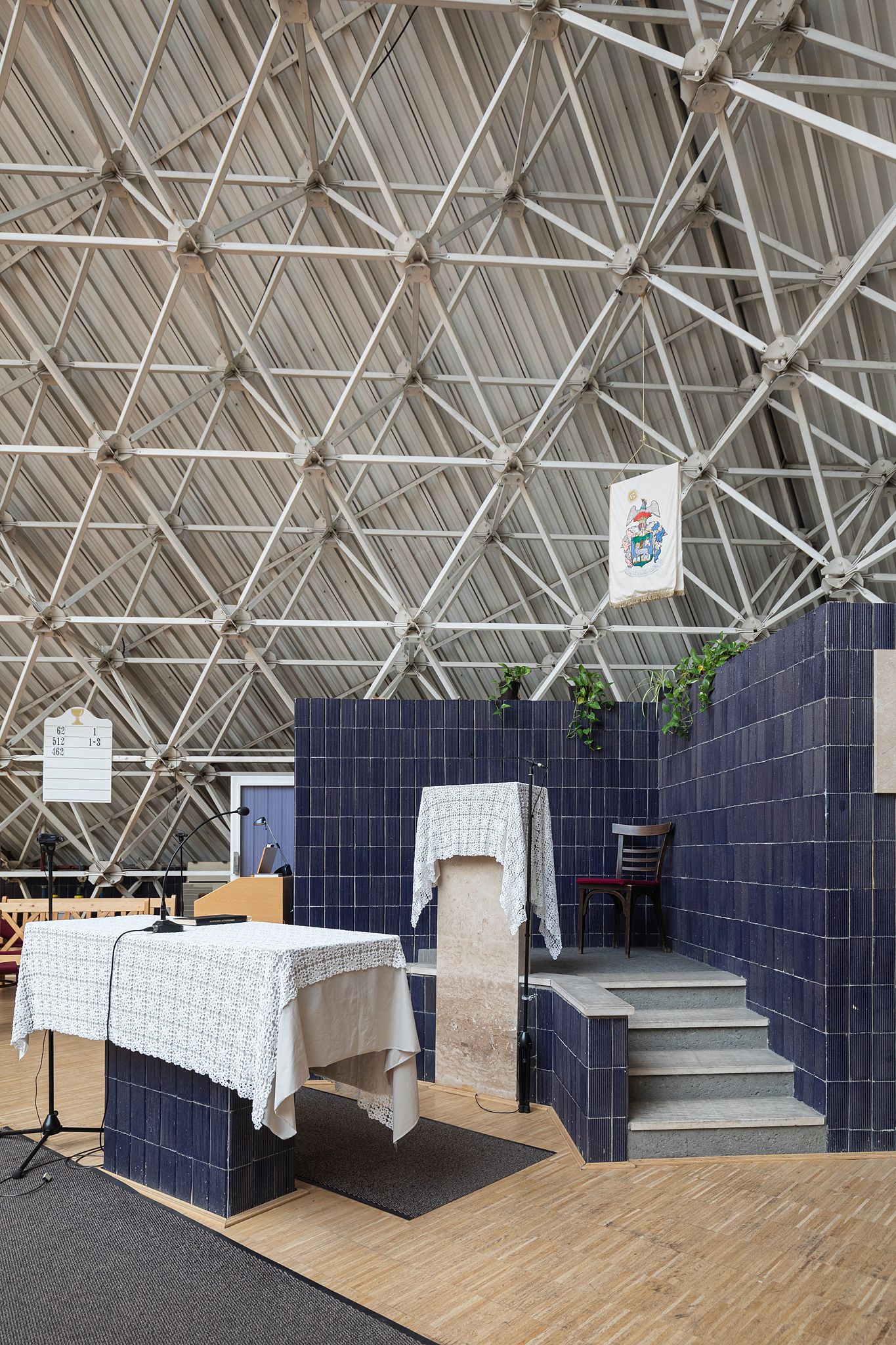
“The church at Ildikó Square is the transposition of the tools applied in the construction of industrial buildings—assembly halls, warehouses, exhibition facilities—to par excellence sacred buildings. The placement of the buildings, the boldness and uncommonness of its shapes, its form evoking an observatory—that is, orientating upwards by default—make it undoubted that the building has an extraordinary purpose.” Ilona Rév(Világosság, 1986 July-December (Volume 27, Issue No. 7-12)).
As opposed to the flamboyance characterizing Christian churches, the lack of the same in Calvinist temples many times results in a spatial experience allowing architecture to prevail. A prominent example of this is the Calvinist Church of Külső-Kelenföld, where the visuality is dominated by the use of reinforced concrete and glass, the emphasis on materiality, the application of light as a “building material” (or, as László Moholy-Nagy put it, light as a component) as well as the space grid manufactured by KIPSZER. The structure produced by the Könnyűipari Szerelő- és Építő Vállalat (Light Industrial Building and Assembly Corporation, KIPSZER) is part of the heritage of pavilion and hall architecture, which was developed for the construction of HUNGEXPO based on the patent of István Szabó. The industrial atmosphere of the building structure gives a profane feel to the space, this is what resulted in such a controversial perception. Why did they still decide to use it in a sacral building?

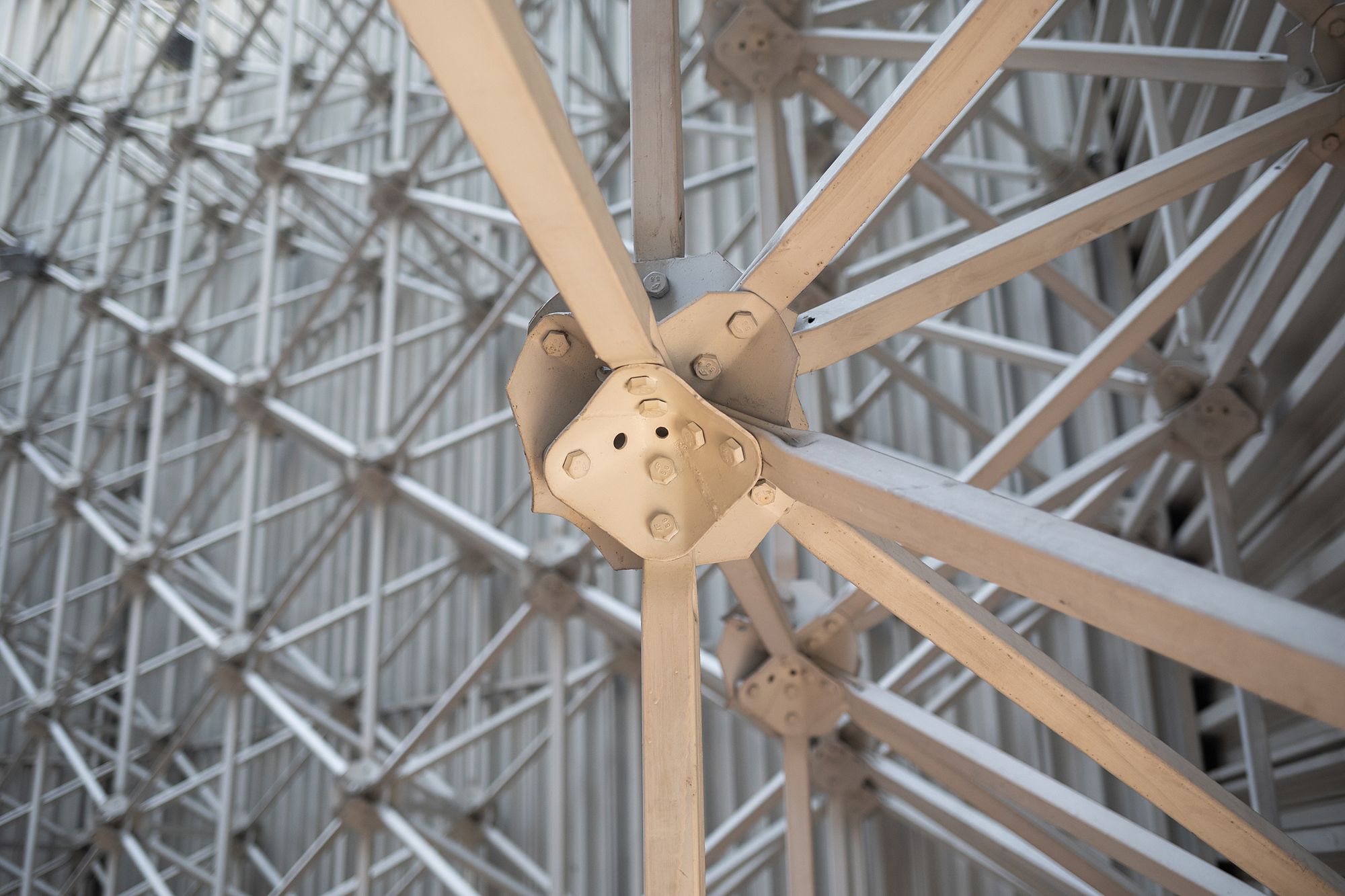
The Calvinist congregation operates from its own resources, so when the possibility of getting a new building arose, it was important to make sure they could afford its construction. The use of the easy-to-build, modular structure proved to be a good decision from an economic perspective: István Szabó created modern architecture by embracing the opportunities of the socialist industry. The visual language evoking ephemeral structures must have also been accepted because, as told by István Juhász, it is not the building that is sacred for the Calvinist congregation: it’s the presence of the congregation that sanctifies the space. The flexible attitude towards the use of space is still of key importance in the community’s life: the central space cannot only function as the venue of preaching, but can also give room to other events of the congregation (such as dancing or table tennis contests).

The community shapes, renews and maintains the church according to their needs and capacity. Not everything is in its original condition: the flat wired glass giving light has been replaced by polycarbonate, and the original mosaic floor also needed repairs. The place needs further improvements and refurbishment in order to meet present needs. The congregation is slowly outgrowing the space, while the cold at wintertime and the heat in the summer make it more difficult to hold sermons and events. The building is not subject to monument or capital building heritage protection, thus a comprehensive renovation would be possible but the costs would exceed the available resources. In addition, the church building still fulfills the task a Calvinist sacred building is intended to fulfill: it gives sufficient space to programs serving the liturgy, while it strengthens the community’s cohesion with its central arrangement and scale.
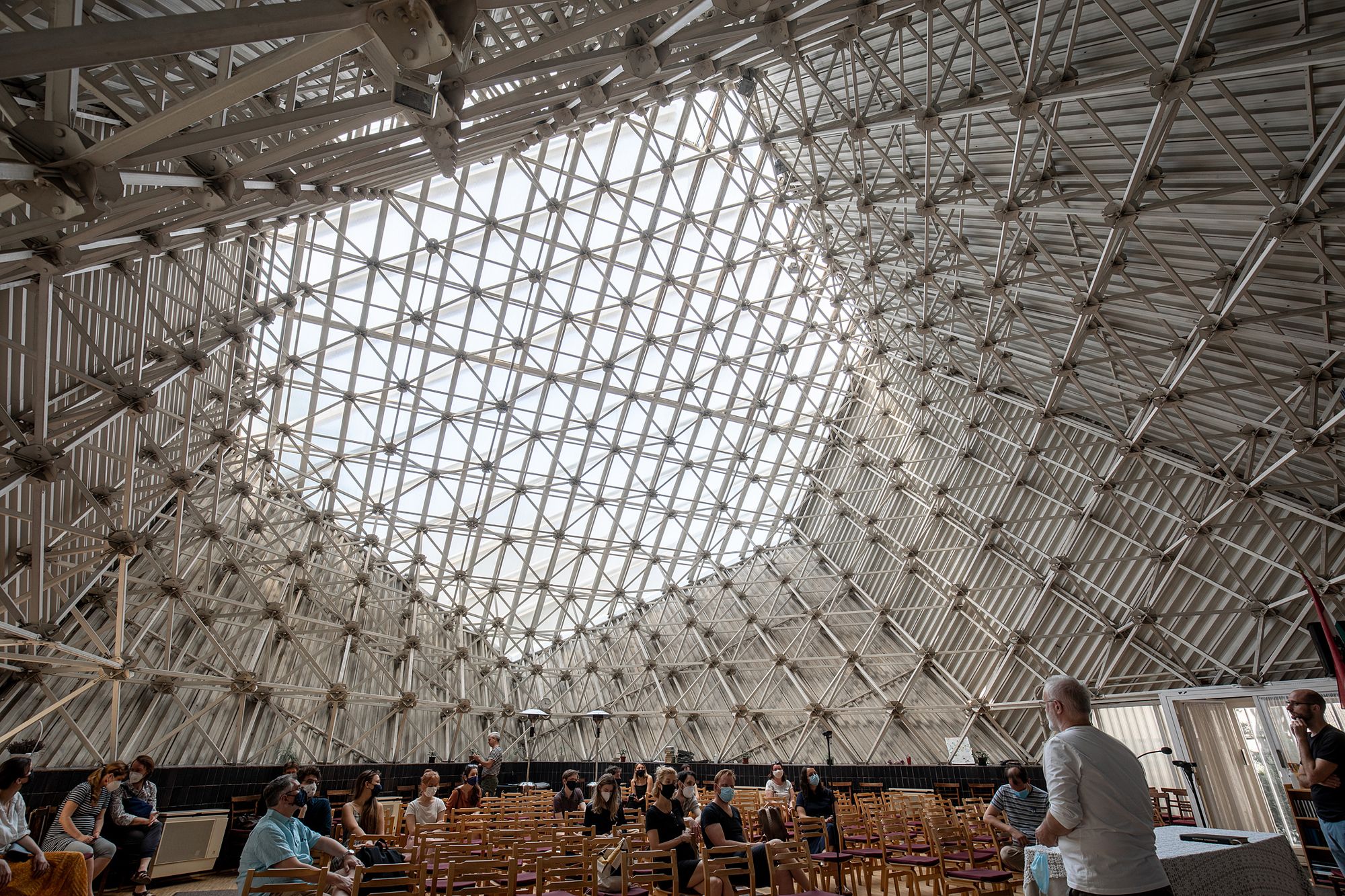
What should its fate be then? What will happen to the key monuments of the era, which cannot be subjected to the classic monument protection approach due to standardization and the use of mass-produced elements? This is the question the Othernity project, the Hungarian Pavilion of this year’s Venice Biennale of Architecture, decided to ask, in which the designers of Architecture Uncomfortable Workshop propose conceptual and alternative ideas about the future of the Calvinist Church of Külső-Kelenföld. Based on what we heard at the walking tour, renovation, the alteration of the building for new purposes and its demolition are all possible options, and it’ll be up to the congregation to make the final call…

Photos: Balázs Mohai
In our series we tell our readers about the walking tours organized by the Hungarian Contemporary Architecture Center (KÉK), in relation to the “Othernity” project. The “Othernity” project presents 12 iconic buildings of the modern architectural heritage in Budapest through the lens of 12 contemporary Central-Eastern European architect studios. How and in what manners the contemporary groups reinterpreted the emblematic buildings of Budapest will be shared with those interested in the Hungarian Pavilion of the Venice Biennale of Architecture in 2021 (05.22.2021 – 11.21.2021).
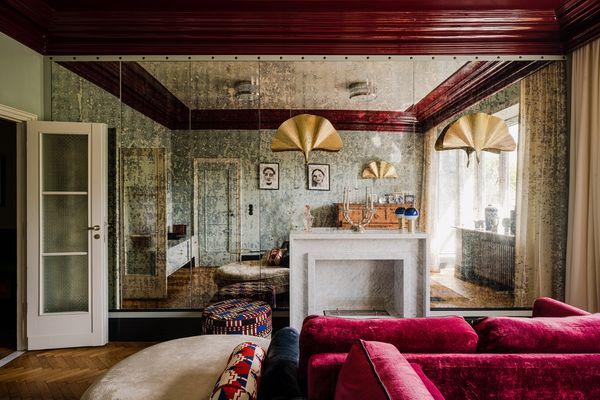
Extraordinary patterns and noble textures dominate the interior of the apartment building in Lodz










